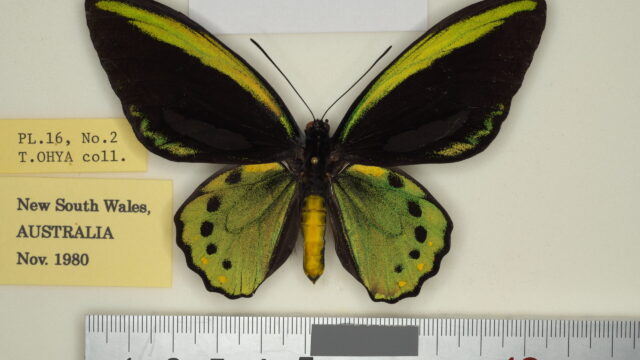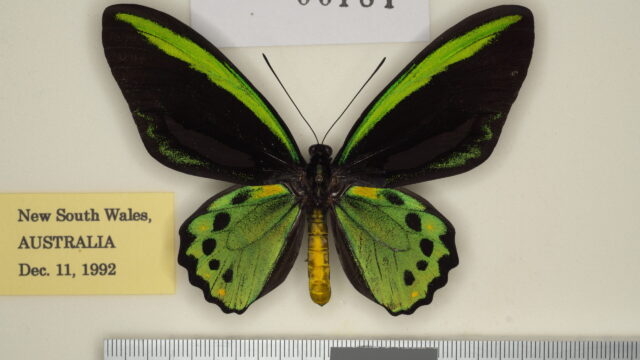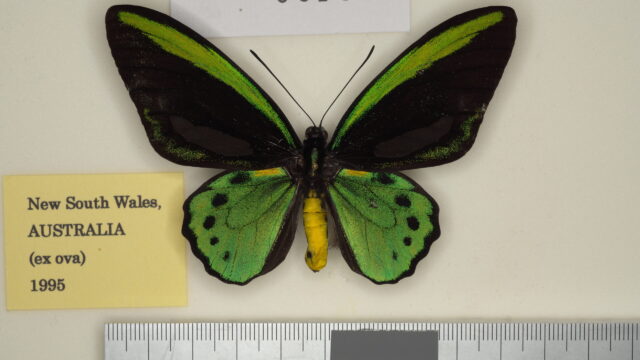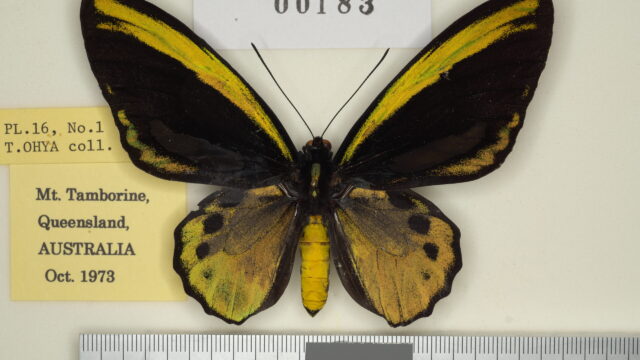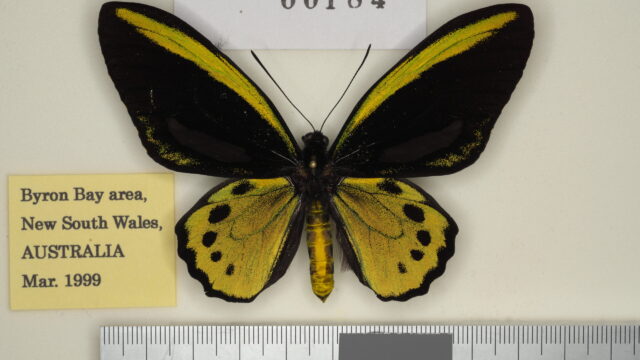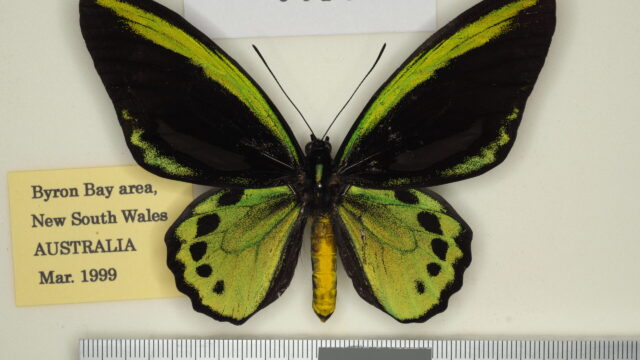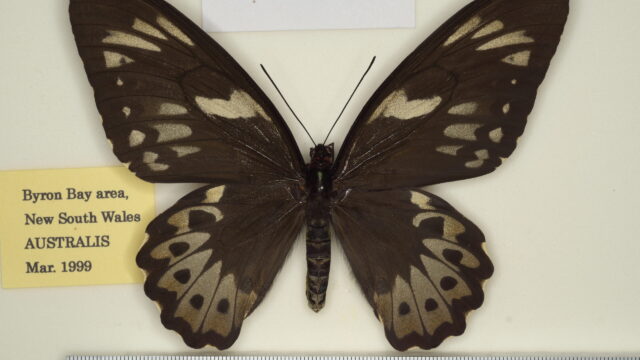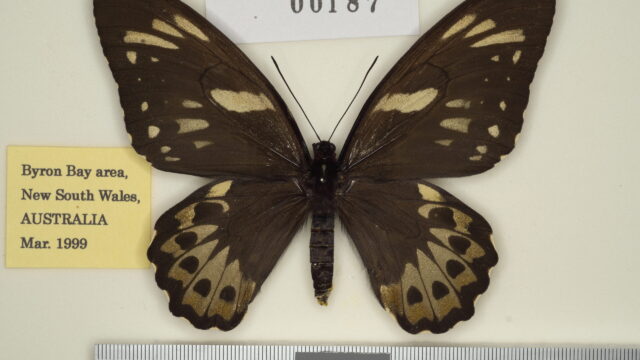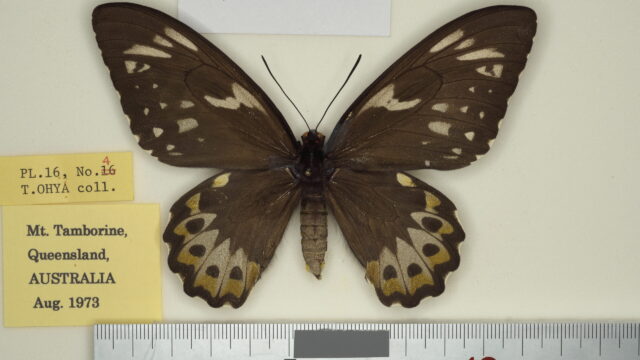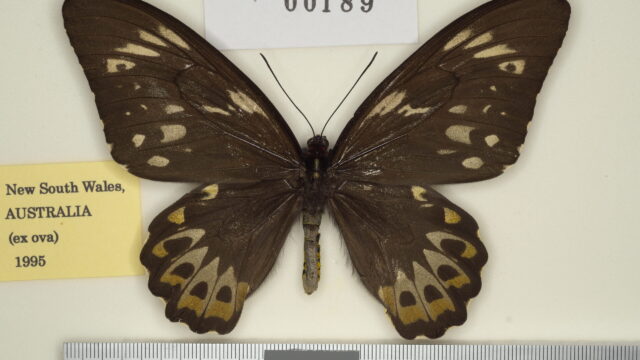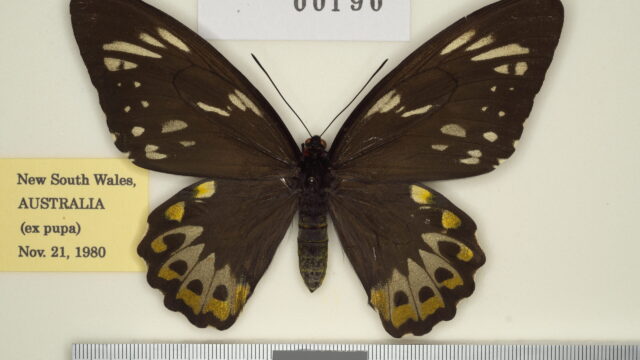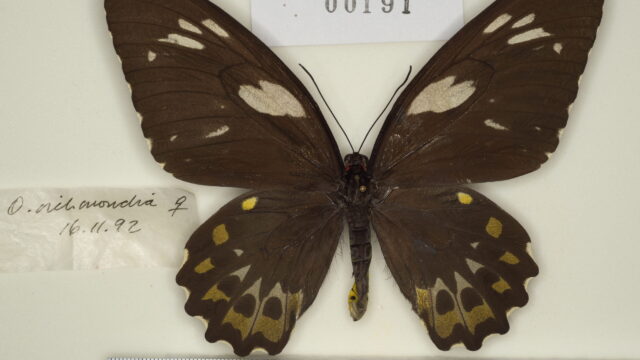- Ssp. richmondia (Gray, 1853)19) [♂, ♀]
(Distribution) [Map 13]
AUSTRALIA [Queensland] Maryborough, Gympie, Kin Kin, Kenilworth, Maleny, Woodford, Mt. Mee, Moreton Bay area, Brisbane, Ormeau, Mt. Tamborine, Burleigh Heads, Springbrook, Binna Burra, Lamington Nat. Park, [NSW] Coolangatta, Tweed Heads, Mt. Warning Nat. Park, Mt. Nardi, Richmond River basin, Lismore, Broken Head (Byron), Ballina, Victoria Park, Mallanganee Nat. Park, Coraki, Clarence River basin, Grafton.
(Episodes of discovery and original description)
Gray (1853), the first reporter, based his description on several specimens (exact number unknown) of ♂ and ♀, but all specimens were lost and are no longer available, except for the holotype ♂. The holotype ♂ was recorded as having been collected in 1850, but its details are unknown. The collector is also unknown, but the specimen was collected at the Richmond River. The subspecies is named after the Richmond River, where it was first collected.
(Characteristics)
It is not only the smallest subspecies inhabiting the Australian Continent, but also the smallest in genus Ornithoptera (wingspan: ♂ is about 10 cm, ♀ is about 12 cm). It was once treated as an independent species due to differences in morphology and genitalia (Gray, 185319), D’Abrera, 1975).
(Spotted pattern)
♂: Wing rather narrow, both the radial and submarginal bands of FW narrow and the median stripe is absent. The black marginal border on HW is wide, and the black discal spots are large and round.
♀: The ground color of both wings is light and pale spots are large. The pale discal spots on HW are wedge-shaped and broad, touching each other. The dark discal spots are small.
(Variation)
♂-f. magnificus Deslisle & Sclavo, 201510): [Aberrant FW/HW pattern] Two golden streaks within broader radial band (spaces 7 and 6) on FW. HW has enormously enlarged submarginal semi-translucent golden spots with unusual presence of small discal ones from the subcostal space to the space 5 basally. Black discal spots larger than usual.
♂-f. reducta Haugum & Low, 197921): [Aberrant FW/HW pattern] The iridescent scales of FW reduced, the radial band being only present. Black scales notably increased on the HW.
(Larval foodplant)
Pararistolochia praevenosa, P. laheyana 30).
